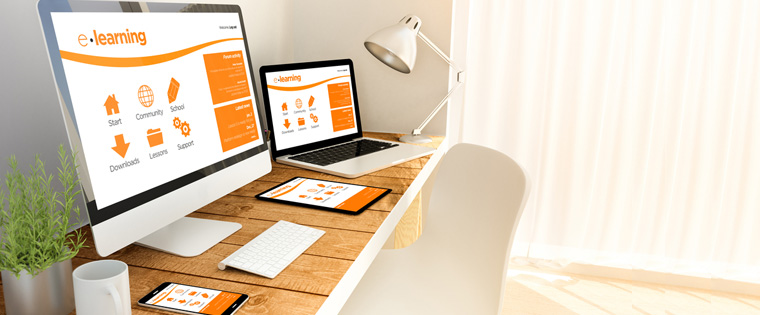Are E-learning and Mobile Learning Different?

It is well known that the ‘e’ in e-learning stands for the word ‘electronic’. So, many consider e-learning to be learning delivered through electronic devices such as desktop computers, laptops, or mobile devices. They perceive learning through mobiles as just another form of e-learning and often use the terms e-learning and mobile learning synonymously. Does that mean you can make your 30-minute e-learning course, created for desktop computers, mobile-compatible and call it mobile learning? NO! The only common aspect between these two methods of learning is the usage of the training delivery platform – electronic devices and the Internet.
The two methods of learning differ in many aspects such as the purpose of training, flexibility in their access, duration of courses, design considerations, and the time required to develop courses. Want to know how? Keep reading.
Note: E-learning in this post refers only to self-paced learning that is delivered through a desktop computer or a laptop.
Purpose
E-learning programs are structured, formal, and constrained by time.They are primarily used to impart specific skills or deliver in-depth knowledge on a subject. Learners are expected to understand and retain the skills and knowledge presented in them.
On the other hand, mobile learning courses are designed to reinforce knowledge. They are extensively used to support the ongoing learning process, by providing learners quick access to bytes of information, while they are on the go. They provide just-in-time learning, on-demand. Also, unlike e-learning courses, mobile learning is not structured or formal. It can be in the form of short videos, infographics, interactive eBooks, or other mobile-compatible formats which are short enough to provide learning at a quick glance.
Accessibility
E-learning courses can be accessed conveniently on desktop computers and laptops. When the learner is on the move, it can be difficult for him to access the e-learning course. Even if he carries a laptop, he might need a high speed Internet connection; and if he takes the course offline, it might not be possible to go through the entire course of 20-30 minutes. So, e-learning is mostly confined to a static environment.
Coming to mobile learning, learners can access learning materials on the go.There is hardly anyone today who does not own a mobile device – either a smartphone, iPad, or a tablet. Learners can go through the training content using their mobile devices anytime, anywhere. Furthermore, the problem of Internet connectivity is less as mobile learning materials are small in size and duration. They can also be delivered through mobile apps.
Learning Duration
A typical e-learning course always covers around 4-5 learning objectives as its purpose is to provide comprehensive knowledge of a subject and wind up the concept in a single go. Each course is anywhere between 20 minutes to 1 hour. Some e-learning courses can even span one and a half hours.
However, a mobile learning course is usually not more than 10 minutes in duration and addresses one learning objective comprehensively. “Mobile learners” find it hard to focus for extended periods of time, and this makes learning nuggets the best choice for delivering content on mobile devices, as sparing 5 minutes for a mobile learning module is not too much to ask.
Design Considerations
The screens of desktop computers and laptops have all the real estate in the world to accommodate heavy content. You can present content in paragraphs, use large images, and include complex interactivities (keeping learners’ familiarity with computers in mind, of course).
When it comes to designing mobile learning courses, you have very limited real estate to work on, which should also accommodate the navigational features. You need to ensure learners are able to access the content on these small screens. So, you have to chunk most of the content to accommodate only that which helps communicate the information – be it in the form of a video, representational graphics, or flowcharts. Also, you need to ensure interactivities are simple and mobile-friendly.
Development Duration
The number of slides in an online course is a function of the number of learning objectives covered in it – greater the number of learning objectives addressed, more the slides. And, we all know that more the number of slides in an e-learning course, the longer it takes to develop it. As we have seen earlier, a typical e-learning course address 3 or 4 learning objectives, and this translates to around 20 to 30 slides (around 30 minutes of e-learning). It takes approximately four weeks to develop a course of this size.
Mobile learning hardly covers more than 2 objectives per course, which typically requires around 2 weeks to develop. Also, a mobile learning module need not always be a course; it can be a video or an infographic. In such cases, it takes only 2-5 days to develop, depending on the amount of content.
Apart from the fact that learning nuggets are accessible on mobile devices, these are a few reasons mobile learning is different from e-learning – the difference in purpose, accessibility, learning duration design considerations, and development duration. Can you think of other differences between e-learning and mobile learning to share? We would love to read them in our Comments section.





